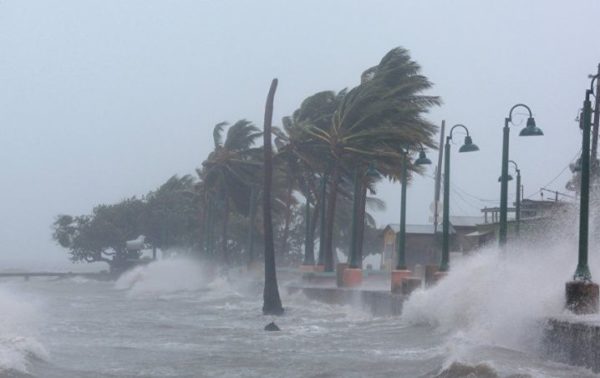The Atlantic hurricane season usually begins on June 1, but recent storm patterns have led them to rethink when it should start.
UNITED STATES (World Meteorological Organization) – Due to stormy weather in recent years, national meteorologists may move up the start of hurricane season by two weeks, from June 1 to May 15.
The proposal, which will be discussed at the World Meteorological Organization meeting in mid-March, is under consideration after one of the most active seasons on record in 2020, with 30 storms.
The debate could reflect the impact of climate change on ocean temperatures, or it may simply be the result of better technology and satellites providing more up-to-date data on storm formation, experts say.
Over the past decade, extraordinary unseasonal activity has resulted in seven tropical storms formed between May 15 and June 1. Since 2000, 11 storms have been detected before the official start of hurricane season.
Last year, the 2020 Atlantic hurricane season began with Tropical Storm Arthur east of Florida on May 16. The storm dumped 10 inches of rain on Marathon Key and ended up brushing North Carolina. Arthur marked the sixth consecutive record sixth year in the Atlantic basin with a tropical cyclone that formed before June, according to data from the National Hurricane Center (NHC).
Since the late 1960s, when satellites began identifying tropical cyclones in the Atlantic, 19 storms formed before June 1, according to Colorado State University researcher Phil Klotzbach. “We are less than 100 days away from the next hurricane season, and we could be even closer if the NHC committee decides to move up the start of the hurricane season to May 15,” he told Univision.
Klotzbach worries that extending the season could test the public’s patience. Since 1950 he notes that we’ve only had three hurricanes before June 1: Able in May 1951, Alma in May 1970, and a freak January storm named Alex in 2016. None of them made landfall in the continental United States.
In fact, on average, the Atlantic has only one hurricane until Aug. 15.
“How long can we keep the public focused on hurricanes,” he said. “While we may have some weaker storms in late May, June, and July, the real hard part of the hurricane season doesn’t start until mid-August. If they change the start of the hurricane season to May 15, that’s three months (May 15 to Aug. 15) wherein most years not much happens,” he added.
It makes sense that the NHC advances the start of the season from May 15, says Jeff Masters, who writes about extreme weather and climate change for Yale Climate Connections. However, it would be good to wait another decade before declaring that the season officially starts on May 15 “to make sure it continues the trend toward an earlier start,” he added.
The WMO proposal involves setting up a science team at the National Oceanic and Atmospheric Administration (NOAA) to examine the ramifications of changing the date.
During hurricane season, the National Hurricane Center issues regularly scheduled tropical weather forecasts throughout the day. However, during the off-season, these forecasts are not issued. Therefore, any system that forms during the off-season may catch many residents off guard.
With more than 46 cyclones, this hurricane season will go down in history as the most active on record
The earlier start date would increase preparation time and public awareness of the existence of these earlier storms. If approved, the season could be moved up, but probably not before 2022.
Some researchers believe the unseasonal storms are evidence that climate change has caused a warming of Atlantic waters that could favor the formation of tropical storms and hurricanes earlier in the season than in previous years.
“It’s complicated to say exactly what has caused the recent increase since we’ve generally been in an active era since 1995 and didn’t see the uptick in early-season storms until around 2011,” Klotzbach said.
“Improved detection technology became available in the 2000s, but we didn’t see a big increase … during that decade. Since these storms tend to be fairly weak, it’s hard to say for sure if this is a trend that will continue,” he added.



